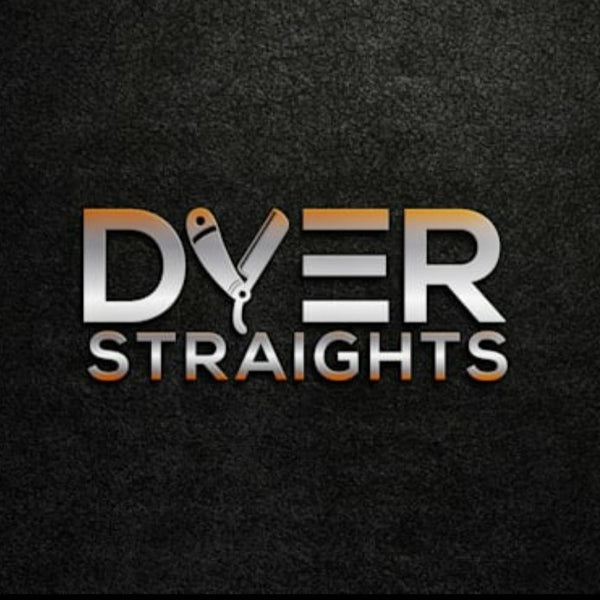Dyer Straights Honing Process
How to Hone a Straight Razor: A Simple, Proven Method
I’ve been honing straight razors since 2019, sharpening hundreds of blades and refining my technique through trial, error, and advice from experienced honesmen and enthusiasts. This straightforward method works especially well for Sheffield razors, though it may be less effective for those with thicker, coarser hair. Everyone’s approach to honing varies, so feel free to adapt this method to suit your needs. Here’s my step-by-step process to achieve a shave-ready edge.
Equipment
- Stones: Norton Whetstone (1k, 4k, 8k), Naniwa 12k Superstone
- Tape: 3M Super 88 Electrical Tape (slightly thicker than standard tape)
- Strops: Horsehide leather with linen and chromium oxide paste
Step 1: Tape the Spine
- Rule: Use 2 layers of tape for wedge-ground razors, 1 layer for hollow-ground razors.
- Taping protects the spine from wear and maintains the correct sharpening angle.
Step 2: Set the Bevel (1k Stone, With or Without Slurry)
The 1k stone’s coarse surface sets the razor’s bevel, creating a sharp edge capable of cutting arm hair (not facial hair yet). Test the edge by lightly shaving wet arm hair—it should cut easily before moving to finer stones.
- Create a Slurry (Optional): Add a small amount of water to the stone and rub it with a slurry stone (if available) to create a milky liquid. This speeds up sharpening but is optional.
-
Circular Strokes: Start at the heel, move to the middle, then finish at the toe, making small circular motions. Repeat for several passes, flipping the razor to sharpen both sides evenly until the bevel looks consistent.
- Check the Tape: If the tape is worn or chewed up, replace it. Focus pressure on the razor’s edge, not the spine, to minimize tape wear. Check and replace tape as needed throughout honing, especially on the 1k stone.
- Edge-Leading Passes: Perform 65–75 strokes on one side with moderate pressure (the most you’ll use in this process). Flip the razor and repeat on the other side.
- X-Pattern Passes: Do 65–75 strokes in an X-pattern (heel-to-toe, sliding diagonally across the stone). Watch the water on the stone—it should ripple over the edge and up the blade’s face if the edge is sharp. If not, the edge needs more work.
- Test the Edge: Inspect the bevel under good light. It should have clean, consistent micro-lines along the edge. Test on wet arm hair. If it cuts easily, proceed. If not, repeat steps 2–4.
- Replace Tape: Unless recently replaced, apply fresh tape before moving to the next stone.
Step 3: Refine the Edge (4k Stone, No Slurry)
- Edge-Leading Passes: Do 65–75 strokes on one side with light pressure—just enough to ensure firm contact between the edge and stone. Flip and repeat on the other side.
- X-Pattern Passes: Perform 65–75 X-pattern strokes with the same light pressure.
Step 4: Polish the Edge (8k Stone)
- Do 65–75 X-pattern passes using only the razor’s weight—no extra pressure.
Step 5: Final Polish (12k Stone)
- Under a trickle of running water, do 30–35 X-pattern passes. The edge may feel like it’s “sticking” to the stone, which is a good sign, but don’t worry if it doesn’t. Avoid extra passes, as they won’t improve the edge. If the edge isn’t sharp enough, repeat from Step 2.
Step 6: Strop the Razor
Stropping removes microscopic burrs left from honing and adds a final polish to the edge. Over-stropping can dull the edge, so follow these steps carefully.
- Linen with Chromium Oxide: Apply chromium oxide paste to the linen strop only (not the leather). Do 12–15 passes. Avoid getting chromium oxide on the leather strop, as it’s too abrasive.
- Leather Strop: Perform 60–70 heel-to-toe passes on a tight leather strop. Increase speed slightly to create friction, which polishes the edge. Stropping doesn’t sharpen the edge but removes burrs for a smoother shave.
Final Notes
- Your razor should now be shave-ready, providing a comfortable, tug-free shave.
- To maintain the edge, strop the razor before each shave: 30 passes on the leather strop, optionally preceded by 5–10 passes on the linen with chromium oxide if the edge hasn’t been stropped recently.
- Stropping is about maintenance, not sharpening. Excessive stropping can dull the edge by rounding it.
Glossary of Straight Razor Honing Terms
- Bevel: The sharpened edge of the razor, formed by grinding both sides of the blade to a precise angle. A well-set bevel is essential for a sharp, smooth shave.
- Hollow-Ground Razor: A razor with a concave (curved inward) blade profile, making it thinner and lighter. Requires one layer of tape on the spine during honing.
- Slurry: A milky mixture of water and stone particles created on a whetstone (often with a slurry stone). It helps sharpen the blade faster on coarse stones like the 1k.
- Spine: The thick, non-cutting top edge of the razor blade. Taping the spine during honing protects it and maintains the correct sharpening angle.
- Stropping: The process of polishing a razor’s edge on a leather or linen strip (strop) to remove tiny burrs and refine the edge for a smoother shave. Not the same as sharpening.
- Wedge-Ground Razor: A razor with a thicker, wedge-shaped blade profile, requiring two layers of tape on the spine during honing for proper angle control.
- X-Pattern: A sharpening technique where the razor is moved diagonally from heel (base) to toe (tip) across the whetstone, ensuring even sharpening along the entire edge.
Contact form
Subscribe to our emails
Be the first to know about new collections and exclusive offers.
